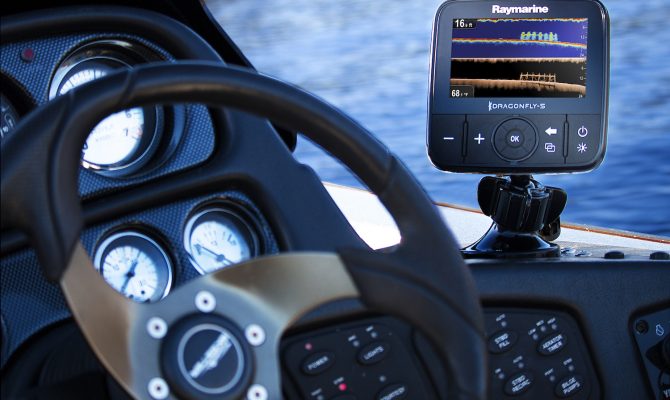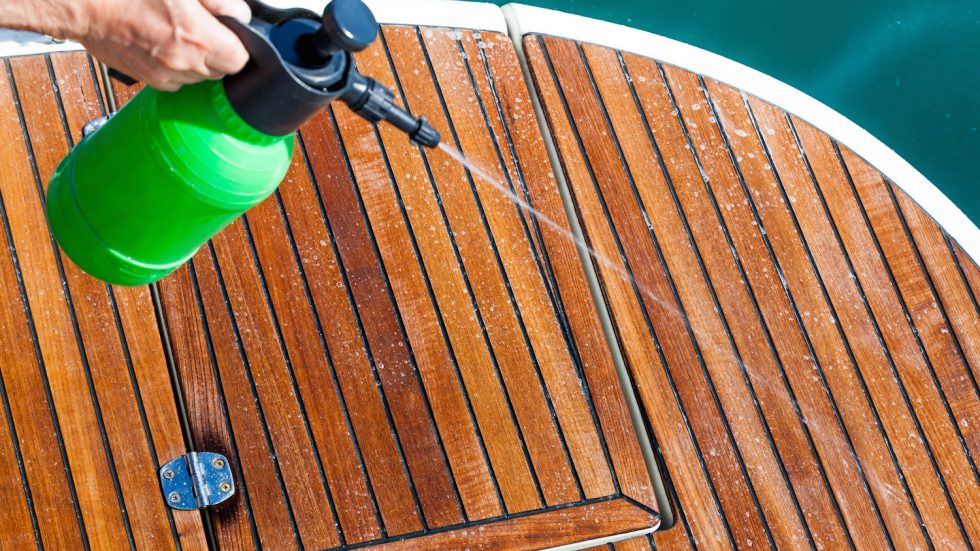Cookie’s recollection of how the Garmin engineers reacted to this incredible feat? “No sweat!”
Why do I mention such extreme depths in a magazine focused on America’s Heartland? Because the rule of thumb in marine electronics says, “If it performs well in deep water, it will perform even better in the shallows!”
So, let’s take a look at CHIRP and why you’ll want it the next time you upgrade your boat or your boat’s electronics.
What CHIRP Is
Compressed High-Intensity Radar Pulse, or CHIRP, came into being in the 1950s via the military, geologists and oceanographers. It never filtered down to everyday boaters due to requiring vast (read: expensive) computing demands that exceeded the recreational market budget.
Jump to the mid-2000s, when the cost of computer chips finally fell far enough to allow Airmar, one of the world’s foremost sonar transducer manufacturers, to create affordable CHIRP transducers. Airmar created the egg, and the chickens came to roost.
The technology first appeared in recreational units in 2011, when Garmin and Simrad introduced displays designed to accept the CHIRP transducer. And that is an important point: You can’t retrofit CHIRP technology; the entire system must function as an integrated package. So, when you’re ready to change over, it will require some serious installation, including hauling your boat to change the transducer, unless yours mounts on the transom.
The transducers you’ve used until now send out a single pulse at a time on an assigned frequency — usually 50 kHz for deep water and 200 kHz for shallow. The transducers measure the time delay and return signal strength, and display that information in graphic form on your sounder screen as fish, structure, sea bottom and anything in between.
CHIRP, on the other hand, sends out many signals on a broad band of frequencies, mostly between 28 and 210 kHz (hence the term “broadband” sonar). To avoid getting overly technical, the pulses are much longer — the sound energy transmitted into the water jumps by 10 to 1,000 times that of “old” sounders — and this results in your image of the world below having five times the resolution.
Where “good” sonar units may have pumped 3,000 or 5,000 watts of power into the signal, CHIRP efficiency affords you honest depth readings to 10,000 feet with only 250 to 650 watts of output power!
What CHIRP Does
Many times I’ve watched boaters’ eyes glaze over when presented with a technical description of a new technology. It’s like the engineers want you to have an intimate working knowledge of the stereo system with 50 equalizer pots when all you really want to know is how to set it to your favorite station and turn up the volume.
So, I’ll make this as easy and painless as possible.
CHIRP sounders send out many pulses of differing frequencies. When the signals bounce back, the targets, having been hit with several different signals and frequencies, show up with greater clarity. In other words, the bait fish that looked like a single blob on your old sounder now look like individual fish in a school.
Whether it’s structure, bait, fish or thermoclines, the separation and detail will blow you away. Imagine using a side-scan sonar to see an individual fish hiding in a hole under a tree fall. It’s now possible!
Because CHIRP uses so much less power in its transmission pulses, the system suffers (and generates) far less interference. Shallow water resolution, bottom lock at speed, reverberation and interference rejection all enjoy vast improvements.
At its introduction, CHIRP was available only in standard down-scan format. But today, every manufacturer uses the technology, and it can be found in side-scan and forward-looking units as well. Additionally, many units now offer Wi-Fi capability, so you can see the display on your smartphone, laptop or tablet.
In the realm of underwater reconnoitering, CHIRP represents an innovation on a par with GPS. And, if you have radar and feel like an upgrade, Raymarine has debuted its CHIRP radar system, representing the same quantum leap in performance that the sonar has. In fact, the company calls the system Quantum CHIRP Pulse Compression, combined with FLIR’s ATX advanced target separation capability. Discern targets as close as 18 feet or increase your maximum range without sacrificing resolution. Quantum also eliminates rain and sea clutter completely, blocks interference from other radars and provides unsurpassed, noise-free reception on crowded rivers and lakes.
It’s enough to make you want to stand up and sing the lyrics to “I Can See Clearly Now.”
Author: Dean Travis Clarke is a regular contributor to HeartLand Boating magazine




